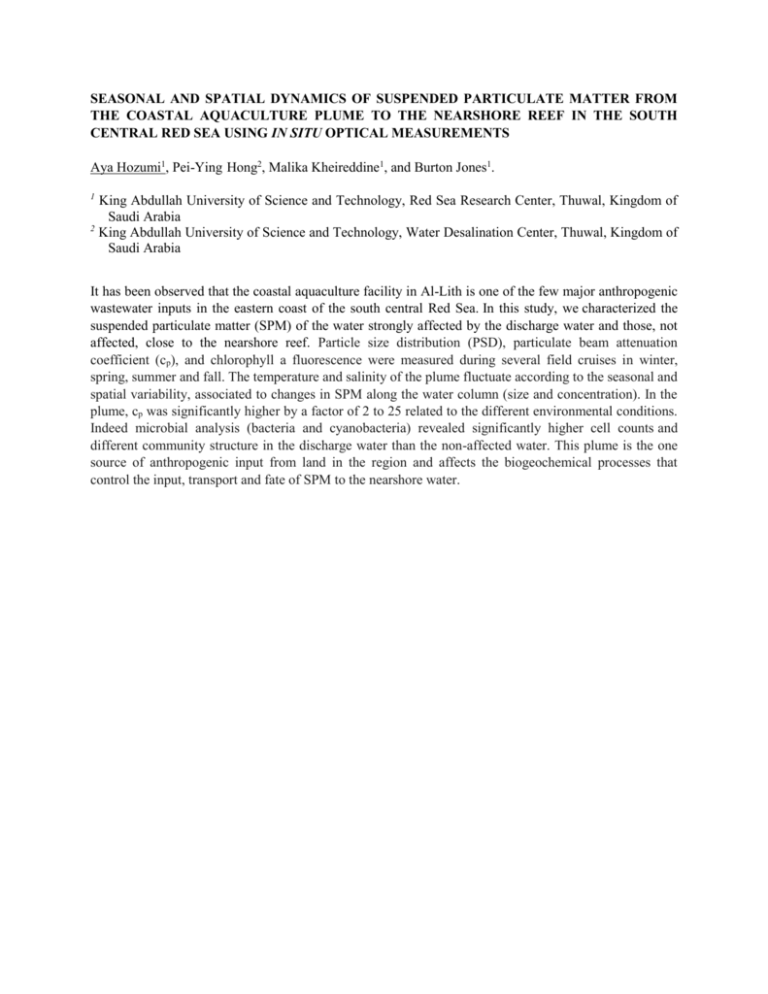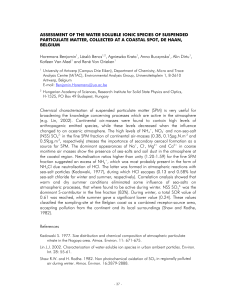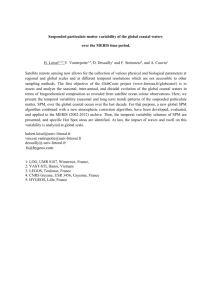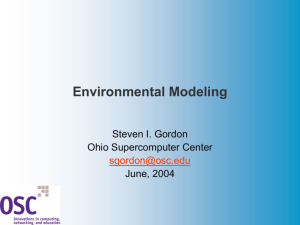Seasonal and Spatial Dynamics of Suspended Particulate Matter
advertisement

SEASONAL AND SPATIAL DYNAMICS OF SUSPENDED PARTICULATE MATTER FROM THE COASTAL AQUACULTURE PLUME TO THE NEARSHORE REEF IN THE SOUTH CENTRAL RED SEA USING IN SITU OPTICAL MEASUREMENTS Aya Hozumi1, Pei-Ying Hong2, Malika Kheireddine1, and Burton Jones1. 1 King Abdullah University of Science and Technology, Red Sea Research Center, Thuwal, Kingdom of Saudi Arabia 2 King Abdullah University of Science and Technology, Water Desalination Center, Thuwal, Kingdom of Saudi Arabia It has been observed that the coastal aquaculture facility in Al-Lith is one of the few major anthropogenic wastewater inputs in the eastern coast of the south central Red Sea. In this study, we characterized the suspended particulate matter (SPM) of the water strongly affected by the discharge water and those, not affected, close to the nearshore reef. Particle size distribution (PSD), particulate beam attenuation coefficient (cp), and chlorophyll a fluorescence were measured during several field cruises in winter, spring, summer and fall. The temperature and salinity of the plume fluctuate according to the seasonal and spatial variability, associated to changes in SPM along the water column (size and concentration). In the plume, cp was significantly higher by a factor of 2 to 25 related to the different environmental conditions. Indeed microbial analysis (bacteria and cyanobacteria) revealed significantly higher cell counts and different community structure in the discharge water than the non-affected water. This plume is the one source of anthropogenic input from land in the region and affects the biogeochemical processes that control the input, transport and fate of SPM to the nearshore water.











